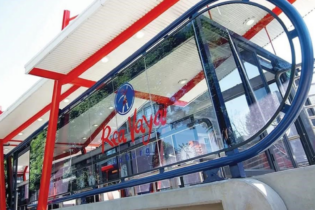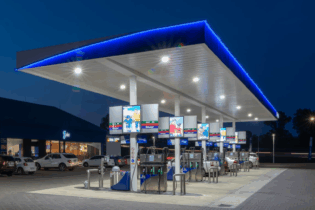Durban is preparing to shift thousands of people, small companies and some big industries from the southern and central section of the city in the most ambitious re-engineering project of Africa’s largest port in several decades.
If city officials get their way, the residential suburb of Clairwood will be wiped off the map, while numerous factories near Durban harbour would be cajoled with financial carrots and sticks to move out and make space for two multibillion-rand dig-out ports (one at the old airport, the other at Bayhead), and a whopping six-fold increase in shipping container traffic. In a bid to untangle decades of piecemeal development and ensure better use of land around the crowded harbour, city consultants have also raised the possibility of relocating some cargo-related businesses to Richards Bay and Cato Ridge, along with the consolidation of the Engen and Sapref petroleum refineries into shared premises south of the city. No decisions have been taken, but documents seen by The Mercury indicate that Engen and Sapref have discussed a joint expansion project that would cost R15 billion – or R10bn each if they expanded separately. Toyota and Grindrod have discussed a new 10 000-vehicle car park and distribution centre at Camperdown, and planning officials hope that several other factories can be encouraged to relocate as far inland as Cato Ridge and Shongweni. Re-engineering the city would not happen overnight, but over the next few decades. Yet the projects – the old airport and Bayhead – would have ripple effects that would influence several parts of the city. Some of the “big picture” implications have emerged from a series of detailed studies that had been kept under wraps. City officials were scheduled to present some of the plans to the 5 300 remaining residents of Clairwood at a public meeting tonight, but this has been postponed after strong opposition from residents who say the city is rushing a process that could change their lives. Although Clairwood has several schools, temples and graveyards dating back more than 100 years, its residential character has been under assault for decades and now the city has proposed that it be rezoned from “residential” to “logistics” use. The city insists that no residents would be “forced” to move, yet there are plans to rip up and widen several of the narrow old streets to accommodate more container trucks and logistics warehouses. A social impact assessment by Dianne Scott and Catherine Sutherland, of the University of KZN, says Clairwood was settled by former indentured Indian labourers almost a century ago and developed into a thriving neighbourhood until it came under pressure from harbour expansion in the 1950s. For almost three decades, residents mounted a resistance campaign against the rezoning of the suburb, yet by 1970 the population had dwindled to about 6 000 people, from about 50 000 in the early 1960s. Scott and Sutherland warn that the remaining residents of Clairwood, along with those in Merebank and Wentworth, had the potential to derail the project if excluded from decision-making. Nevertheless, further intrusion of heavy trucks, blazing lights, noise and other pressures would degrade the area and place other communities under similar pressure.“Ports tend to attract crime, such as prostitution and drugs, which have the potential to lead to urban decay. As a result, some criminal hot spots would possibly locate in different areas,” they said.
Apart from the potential displacement of crime to other suburbs, the phased relocation of several industries and a huge increase in container and truck traffic volumes can be expected in many parts. If industries relocated to Richards Bay or Cato Ridge, workers and their families have to move or commute longer distances. Traffic would also grow and to avert gridlocks, planners suggested building a “trucks only” highway from the harbour to a new container logistics centre at Cato Ridge. But the freight industry has opposed this proposal and it now seems likely that a shorter “trucks only” route is on the cards to link the harbour with a new truck stop terminus near Coedmore Quarry. A report by the eThekwini municipality and Jon van Coller, of Vancometrics Economic Consultancy, suggests that the two dig-out ports could lead to the transfer of ship-building from Durban to Richards Bay, along with some bulk and break-bulk cargo companies. The Vancometrics/eThekwini report says the dig-out venture provides an opportunity to reposition KZN as the major trading gateway to Africa, as well as a chance for a “fresh start” to redesign Durban’s outdated infrastructure, unclog traffic problems and improve industrial efficiency. Some older industries had no real need for proximity to the port and could be clustered inland to give them a competitive advantage. A ranking system for different industries concluded that shipping/ should get first preference for land around the port, while others like clothing/textile/footwear could be offered incentives to shift further inland. As a carrot, industries could be induced to move through cheaper municipal rates, cheaper water and electricity charges, tariff protection or public transport subsidies. As a stick, “firms should be advised that no company will be forced to move, but that rates and utility costs in their areas could be raised “. But the cost of moving some factories might be too expensive, so it might be necessary to consider “selective expropriation”. The Mercury






